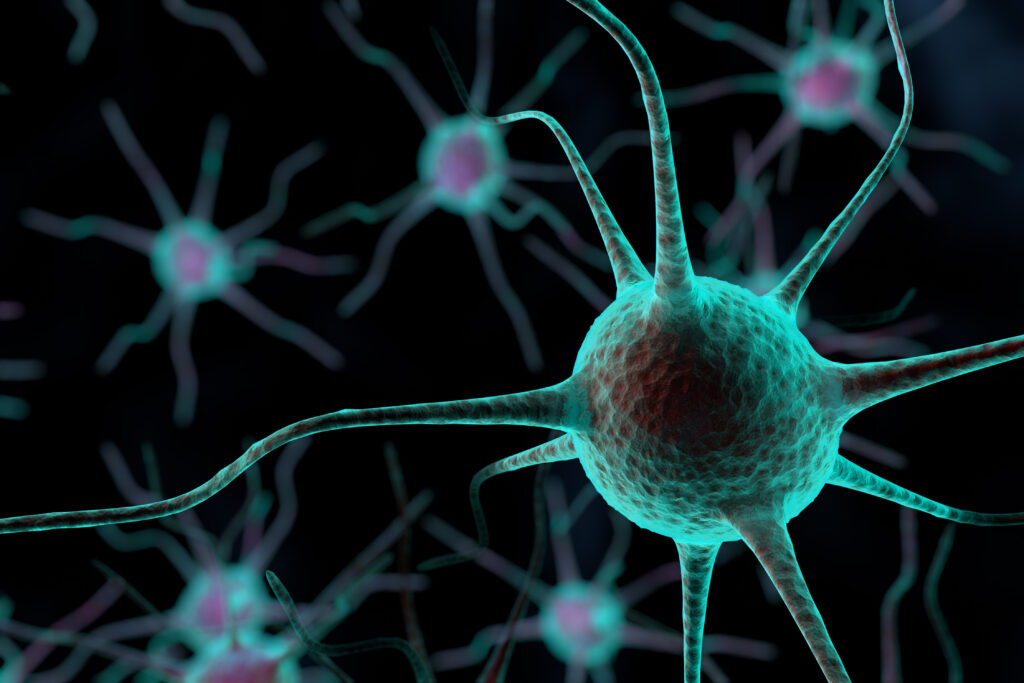Alzheimer’s disease is a neurodegenerative disorder characterized by the accumulation of toxic proteins in the brain, leading to cognitive decline and memory loss. While beta-amyloid and tau have long been considered the main culprits behind the development and progression of Alzheimer’s, recent research has suggested that other toxic proteins may also play a role in the disease.

One such protein is TDP-43, which was recently found in 60% of Alzheimer’s cases examined. TDP-43 is known to accumulate in the brains of patients with ALS and FTLD, but its presence in Alzheimer’s has been less well-studied until now. The study, published in Acta Neuropathologica, examined the brains of 97 Alzheimer’s patients and found that TDP-43 was present in 58 of them.
The accumulation of TDP-43 was also found to be associated with more severe cognitive impairment, suggesting that it may contribute to the cognitive decline seen in Alzheimer’s. This finding is significant because it suggests that Alzheimer’s may involve a complex interplay between multiple toxic proteins, and that targeting these proteins in addition to beta-amyloid and tau may be necessary for the development of effective treatments.
Another protein that has been implicated in Alzheimer’s is alpha-synuclein. Alpha-synuclein is the main component of Lewy bodies, which are the hallmark pathological feature of Parkinson’s disease. However, alpha-synuclein has also been found in the brains of Alzheimer’s patients, particularly in those with coexisting Lewy body dementia.
One study published in Brain found that alpha-synuclein was present in the brains of 51% of Alzheimer’s cases examined, and that its presence was associated with more severe cognitive impairment and a faster rate of disease progression. The study’s authors suggest that the presence of alpha-synuclein in Alzheimer’s may represent a “second hit” that exacerbates the damage caused by beta-amyloid and tau.
Yet another protein that has been linked to Alzheimer’s is the prion protein. Prion diseases are a group of rare neurodegenerative disorders caused by the accumulation of misfolded prion proteins in the brain. While prion diseases are distinct from Alzheimer’s, some studies have suggested that the prion protein may also play a role in Alzheimer’s.
One study published in the Journal of Alzheimer’s Disease found that the prion protein was present in the brains of Alzheimer’s patients, and that its presence was associated with more severe cognitive impairment and a faster rate of disease progression. The study’s authors suggest that the prion protein may interact with beta-amyloid and tau to create a toxic cascade that leads to neuronal death and cognitive decline.
These findings suggest that Alzheimer’s may involve a complex interplay between multiple toxic proteins, and that targeting these proteins in addition to beta-amyloid and tau may be necessary for the development of effective treatments. While much research has focused on beta-amyloid and tau, these findings highlight the importance of studying other proteins that may contribute to the development and progression of Alzheimer’s.
One promising avenue of research involves the use of immunotherapy to target multiple toxic proteins simultaneously. Immunotherapy involves the use of antibodies to clear toxic proteins from the brain, and has shown promise in clinical trials targeting beta-amyloid. However, there is currently no immunotherapy treatment available for TDP-43, alpha-synuclein, or the prion protein.
The recent finding that TDP-43 is present in 60% of Alzheimer’s cases examined highlights the importance of studying other toxic proteins beyond beta-amyloid and tau in the development and progression of the disease. Alpha-synuclein and the prion protein have also been implicated in Alzheimer’s, suggesting that the disease
is a complex, multifactorial disorder that may involve the interplay of multiple toxic proteins. While much research has focused on beta-amyloid and tau, these findings highlight the need for a more comprehensive understanding of the disease’s underlying pathophysiology.
Furthermore, the identification of other toxic proteins in Alzheimer’s disease may also have implications for diagnosis and biomarker development. Beta-amyloid and tau have been the main targets for the development of imaging and cerebrospinal fluid biomarkers for Alzheimer’s, but these markers may not be sufficient to detect the presence of other toxic proteins in the brain.
One study published in Neurology found that TDP-43 was associated with more severe atrophy in brain regions typically affected by Alzheimer’s, suggesting that imaging biomarkers may be useful in identifying the presence of TDP-43 in the brain. Similarly, other imaging and biomarker studies may be needed to identify the presence of alpha-synuclein and the prion protein in Alzheimer’s.
Overall, the identification of other toxic proteins in Alzheimer’s disease underscores the complexity of the disease and the need for a more nuanced understanding of its underlying pathophysiology. While much research has focused on beta-amyloid and tau, these findings highlight the importance of studying other proteins that may contribute to the development and progression of the disease.
However, it is worth noting that the presence of other toxic proteins in Alzheimer’s does not necessarily negate the importance of beta-amyloid and tau. These proteins have been shown to play a central role in the disease, and many promising treatments targeting these proteins are currently in development.
For example, several monoclonal antibodies targeting beta-amyloid are currently in clinical trials, and some have shown promising results in reducing amyloid plaques in the brain. Similarly, drugs targeting tau are also in development, with some early-stage clinical trials showing potential benefits in reducing tau pathology and improving cognitive function.
While the recent finding that TDP-43 is present in 60% of Alzheimer’s cases examined is a significant discovery, it is important to keep in mind that Alzheimer’s is a complex, multifactorial disease that may involve the interplay of multiple toxic proteins. Further research is needed to fully understand the role of TDP-43, alpha-synuclein, and the prion protein in Alzheimer’s, as well as their potential as targets for future treatments and biomarkers for diagnosis.





